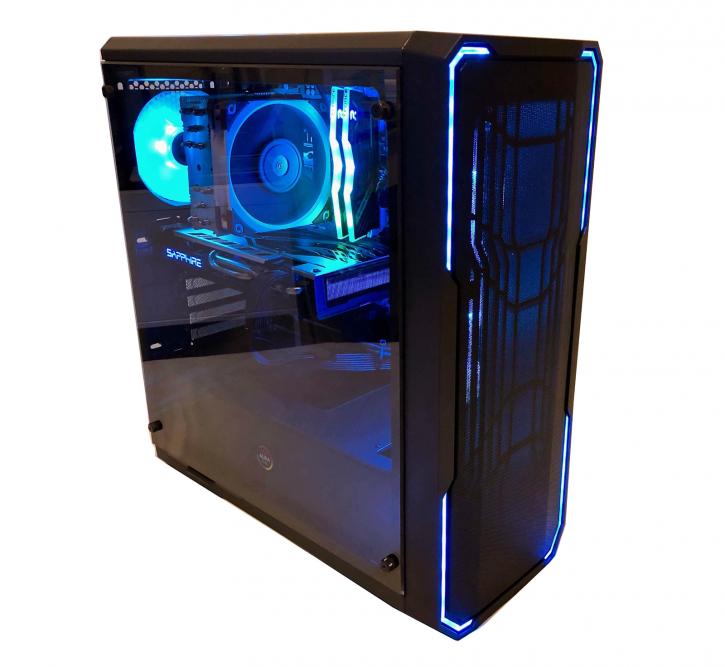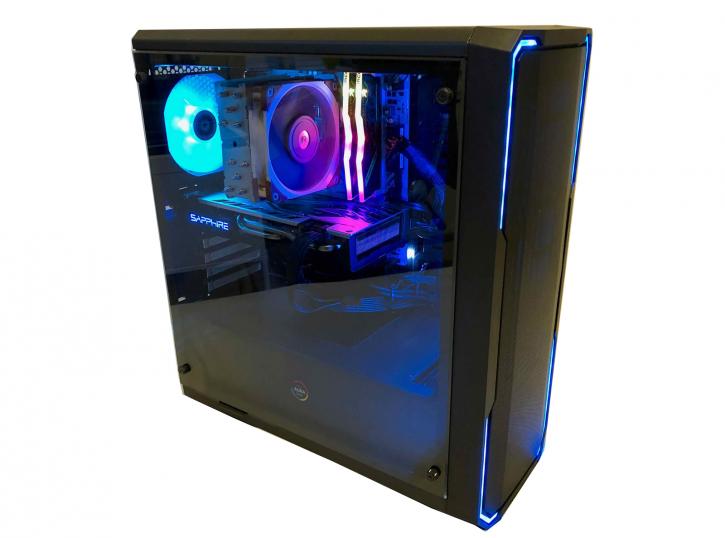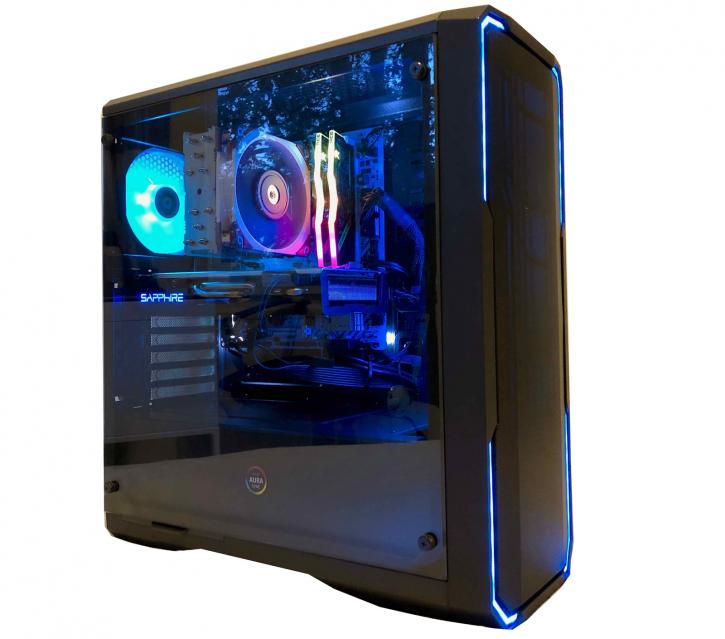Product Showcase Build Process
Product Showcase Build
Below is a list of components that were used in the build process:
- Motherboard - MSI B350M Mortar Arctic
- PSU - Corsair TX650M
- Cooler - Noctua NH-U12S
- GPU - AMD Radeon RX 580, Sapphire Nitro+
- System Fans - 3x Bitfenx Spectre RGB
Time to build. For a chassis that - in my mind - bridges the gap between the ultra-compact and more regular sized units, there is more than enough space to work with here. Despite the reduced length when measured up against the original case, my 650W unit had zero issues fitting with plenty of space to spare. Naturally, you'll need to account for cable length protruding from the PSU itself, but that's an extra 2-3cm or so, given that they'll be making a right angle turn fairly fast.
There really is acres of room to work with, which should be welcome news for beginners and those of us with bucket-sized hands. Mounting a taller tower cooler also shouldn't be a problem, though maybe double check with units as large as the NH-D15 or Dark Rock Pro 4. In fact, I know they won't fit. That was more of a PSA.
This is a bit of a test for the PC, as I will be using many a cable today. EPS, 1x PCIe, two SATA chains, as well as in case cables and those coming from the Spectres (i.e. 3-pin fan and RGB). Despite this, I found that there was plenty of space to tuck away cables where needed, and zip tie them also. The case is certainly not lacking in cable management options, and whilst a guide bar or velcro ties would be nice, it's not a big problem.
The build went mostly without issues. When installed, the mainboard nearly blocks the cable routing for the EPS cable, meaning I had to remove the board from the case to pre-route the cables for the rear exhaust fan. Other than that, however, the build was fine. I suspect that cable management would get increasingly complex if you had another drive, more fans, or RGB strips, but I also suspect (and know) that this is a problem in any mid-tower case, especially those on the more compact side.
There is also no space to route cables below the main board, meaning all audio/USB 3.0 (in my case) and fan headers at the bottom of your mainboard must be routed through the back side located cable holes. For me, this is a major annoyance, as it means you have to have cables stretching across the bottom of your case/mainboard.
Putting the finished build up for the show, it's clear that - despite having some ergonomic problems - the Enso does enough things right, and - to boot - looks absolutely fantastic. I'm aware that my use of an mATX mainboard that is somewhat color clashing with the chassis itself isn't ideal. However, to my mind, the build looks good and showcases the Enso's strengths.
For 89.99 USD, I really cannot complain about the way this case looks when housing a build. I think I still prefer the likes of Fractal's Meshify, but this is an easy 'equal' to the 275R, which I gave a fairly positive review to back last year The Enso, luckily, checks all the boxes for me. Tempered glass, clean lines, RGB light show? Sign me up.
Acoustics
Finally, a word on acoustics. We test using the three aforementioned fans connected directly to the mainboard. The tests are done with all fans aside from said chassis fans brought to a stop. One reading is taken with all fans @ 5v DC, and the next at full speed (i.e. 12v DC). The device used to record sound levels sits atop a desk around 2ft away from the top of the case. As much as is possible the test is conducted in a quiet flat with as much noise isolation as possible.
- 5v DC results: 40.5
- 12v DC results: 42.8
As you can see, there was a notable difference between the fans cranked to 100%, and when they are manually set to 50%. This should be of no great surprise, but anyway. With the fans @ 50%, the case was nearly inaudible, and - during gaming - by far the loudest thing in my system is the RX580. So, whilst by no means silent, you should be perfectly able to find a middle ground between noise and performance. For a case not marketed as being silent (airflow vs. silence don't tend to mix), it does a good job.
With that, we reach the end of this review. Next? Conclusion.




